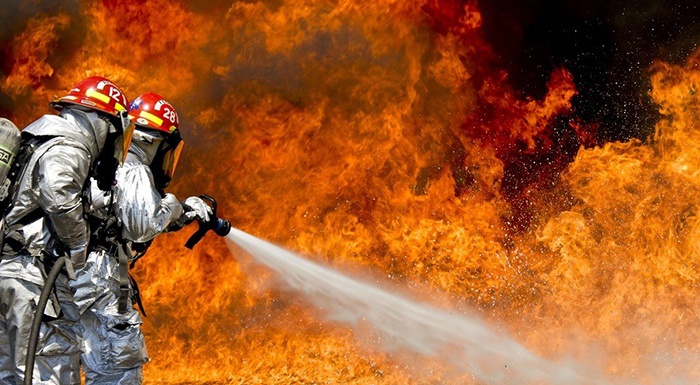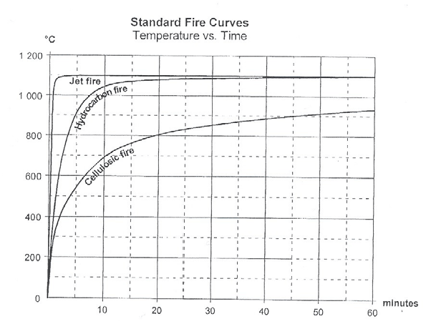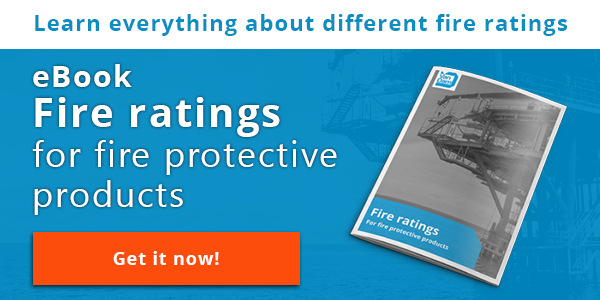
In Passive Fire Protection (PFP) there are three types of fire which fire protective products have to be able to withstand:
- Cellulosic fire;
- Hydrocarbon fire;
- Jet fire.
Cellulosic fire is a fire that grows slowly in time but ultimately reaches an intensity that is very high and can even surpass hydrocarbon fire temperatures. This type of fire can be regarded as the most common type of fire. Hydrocarbon fire, also known as pool fire, grows almost instantaneously and reaches a temperature of 1000°C within 5 minutes. Jet fires are a particular group of hydrocarbon fueled fires expelled from an orifice, e.g. leak in pipe or vessel, under pressures of 2 bar or greater. Jet fire is the most severe fire scenario, considering the effect of erosion of steel and also the higher rate of burning due to turbulent fuel and air mixing. Thus, the main differences between these types of fires is the fact that hydrocarbon fire and jet fire are more dangerous and severe than cellulosic fire.

Jet fire tests
Jet fire resistance of fire protective products are determined by the standards OTI 95634 “Jet fire resistance test of passive fire protection materials”, and the ISO 22899-1 “Determination of the resistance to jet fires of passive fire protection materials”. These standards are not as elaborate and comprehensive as the IMO FTP code for cellulosic fire protection. Therefore, there is still a need for additional specifications of both the jet fire characteristics and the required performance of the fire protection materials, of which the most important specifications are:
- Duration of the jet fire exposure;
- Minimum duration of the insulation performance of the structure;
- Maximum temperature rise of the structure.

“J” fire rating
When a fire and blast rated product passes the tests of OTI 95634 and/or ISO 22899-1 it will be accredited a “J” fire rating. It will be supplemented with a class description of 0, 15 or 60 which describes the fire integrity duration of the insulation material.
The following criteria is generally used in order to assess the fire integrity of fire and blast protective products:
As you can see in the table, “H” and “J” classified products need to be able to withstand more severe fires for a longer period of time during tests. These products are insulated accordingly.

Conclusion
Through testing and the right classification a product can ensure protection against jet fires. This type of fire is not as common as cellulosic fire. But if there are any hydrocarbons processed in a work environment, the threat of jet fire is present and therefore your PFP strategy should anticipate on this by positioning “J” fire rated products in the right areas. In doing so, you will provide the highest level of safety to personnel and critical equipment.
Download our eBook "Fire ratings for fire protective products" for more information on the different types of fire and how to ensure safety accordingly.






